
Surrealism - VI
Jan Lebenstein
1930 - 1999
Jan Lebenstein
(born January 5, 1930 in Brześć nad Bugiem, died May 28, 1999 in Kraków) - Polish painter and graphic artist.
He came from a Jewish family. He was a graduate of the State Art High School in Warsaw. He studied at the Warsaw Academy of Fine Arts (1948–1954) under Artur Nacht-Samborski. He made his debut at the Arsenal in Warsaw in 1955. A year later, he joined the Theater on Tarczyńska, run in his own apartment by Miron Białoszewski, and had his first individual exhibition there. Shortly afterwards, he went on a four-week scholarship to Paris, where in 1959 he received the Grand Prix de Paris at the 1st Youth Biennial. From that year he remained in this city, and in 1971 he acquired French citizenship.
In 1976, he was awarded the prize of the New York Alfred Jurzykowski Foundation. In 1977, his first large solo exhibition took place in Poland, he showed his works in Wrocław. In 1987 he received the Award. Jan Cybis. In 1992, the largest exhibition of his works in Poland took place - at Zachęta in Warsaw. By order of May 3, 1998, President Aleksander Kwaśniewski "in recognition of outstanding achievements in artistic work, for services to Polish culture" honored him with the Grand Cross of the Order of Polonia Restituta.
He was buried at the Powązki Cemetery.

Jan Lebenstein

Jan Lebenstein

Jan Lebenstein

Jan Lebenstein
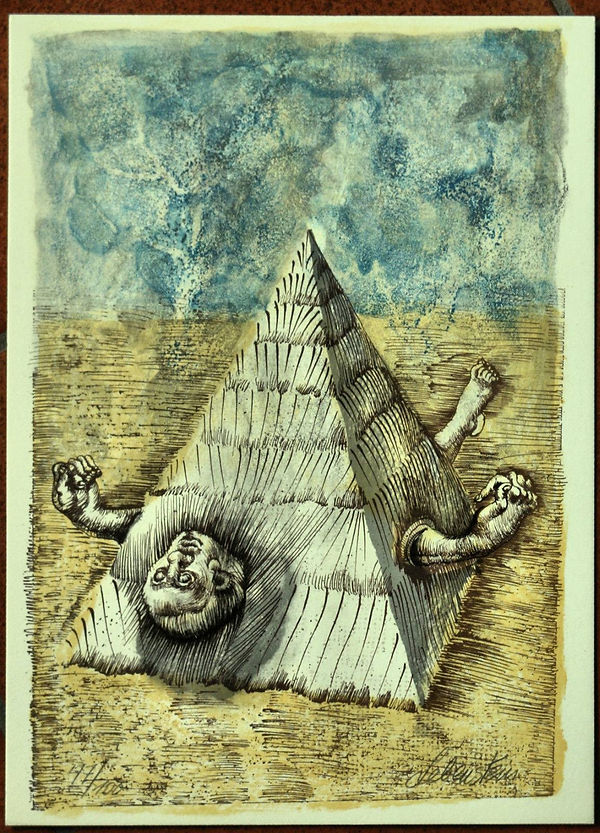
Jan Lebenstein

Jan Lebenstein

Jan Lebenstein

Jan Lebenstein

Jan Lebenstein

Jan Lebenstein

Jan Lebenstein

Jan Lebenstein

Jan Lebenstein

Jan Lebenstein

Jan Lebenstein

Jan Lebenstein
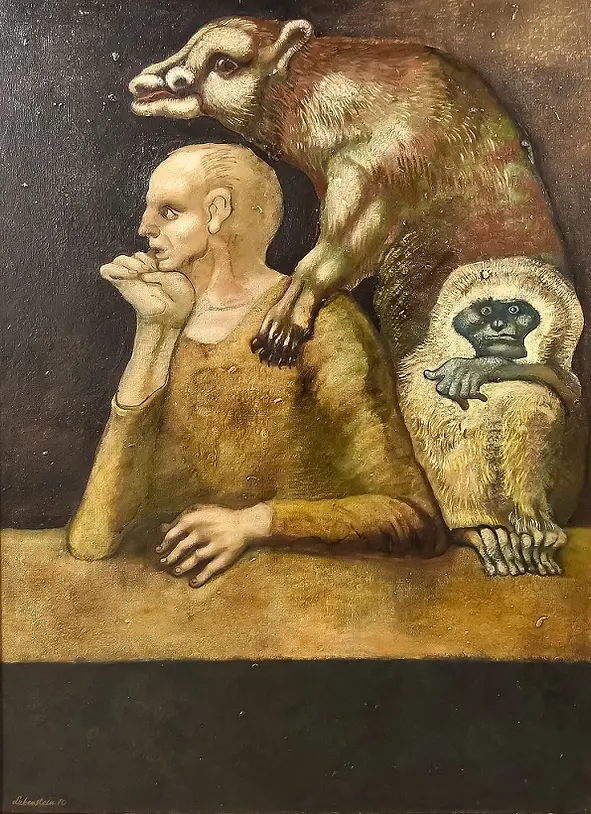
Jan Lebenstein

Jan Lebenstein

Jan Lebenstein

Jan Lebenstein
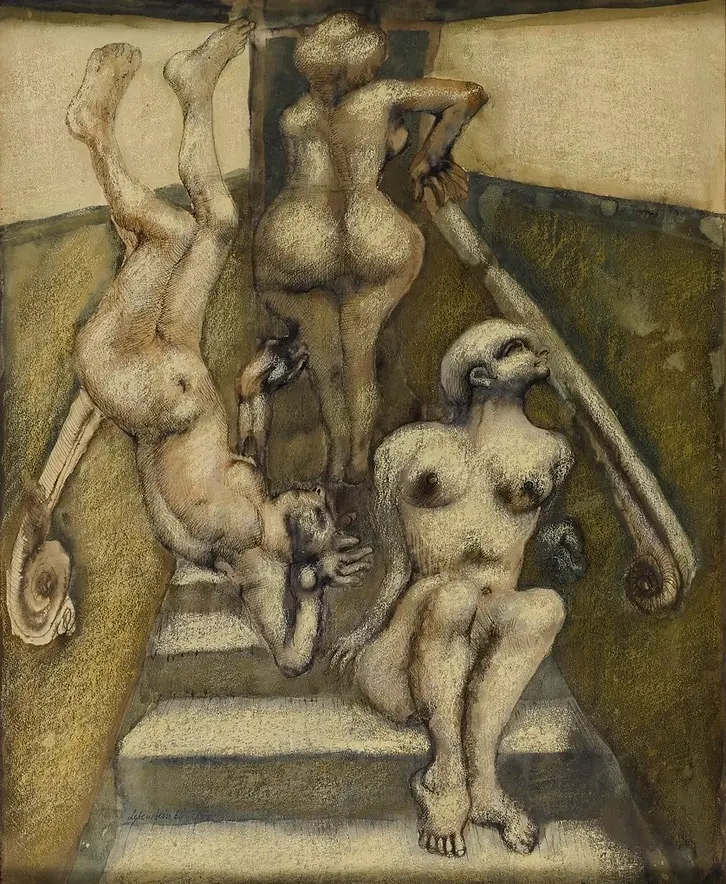
Jan Lebenstein

Jan Lebenstein

Jan Lebenstein

Jan Lebenstein

Jan Lebenstein
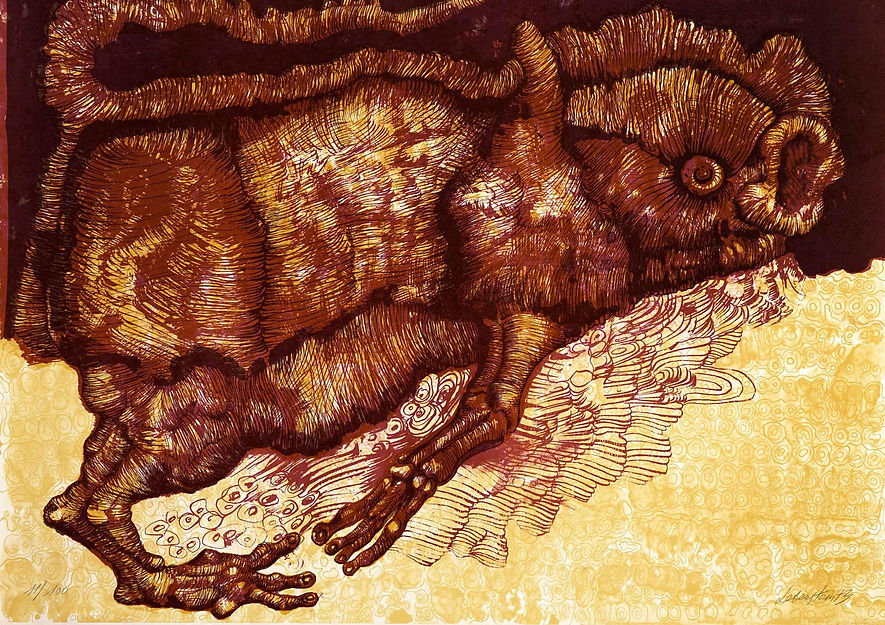
Jan Lebenstein

Jan Lebenstein

Jan Lebenstein
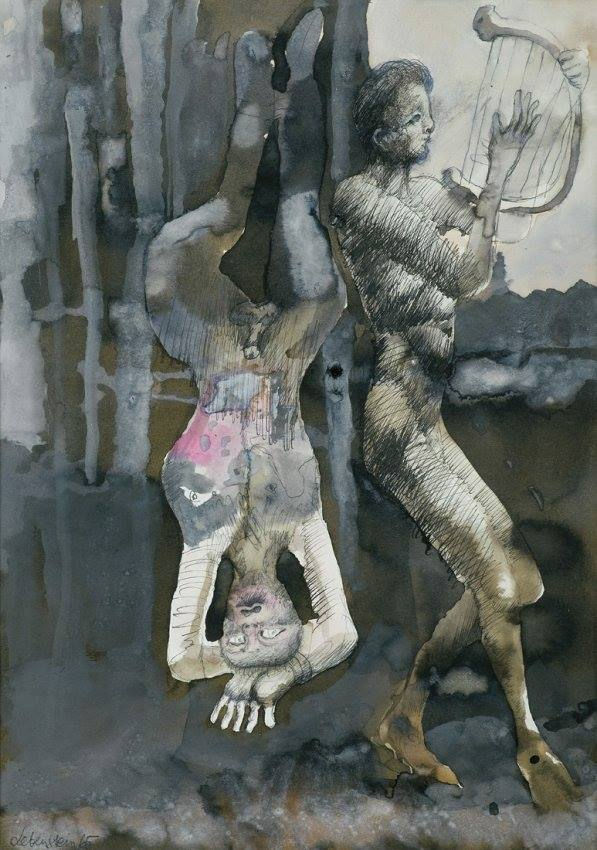
Jan Lebenstein

Jan Lebenstein
Ivan Kenneth Eyre
1935 – 2022

Ivan Kenneth Eyre (15 April 1935 – 5 November 2022) was a Canadian artist best known for his prairie landscapes and compositionally abstract, figurative paintings. In addition, Eyre was a Professor Emeritus of painting and drawing at the University of Manitoba where he taught for 33 years, from 1959 until his retirement in 1992. He has been described as a "visual philosopher" and "a true outsider and visionary".
Ivan Eyre's paintings and drawings have been exhibited internationally and are featured in numerous galleries across Canada. His sculptures are prominently displayed at Assiniboine Park and the McMichael sculpture garden in Kleinburg, Ontario.
.

Suckling Pigs
Ivan Eyre
1963
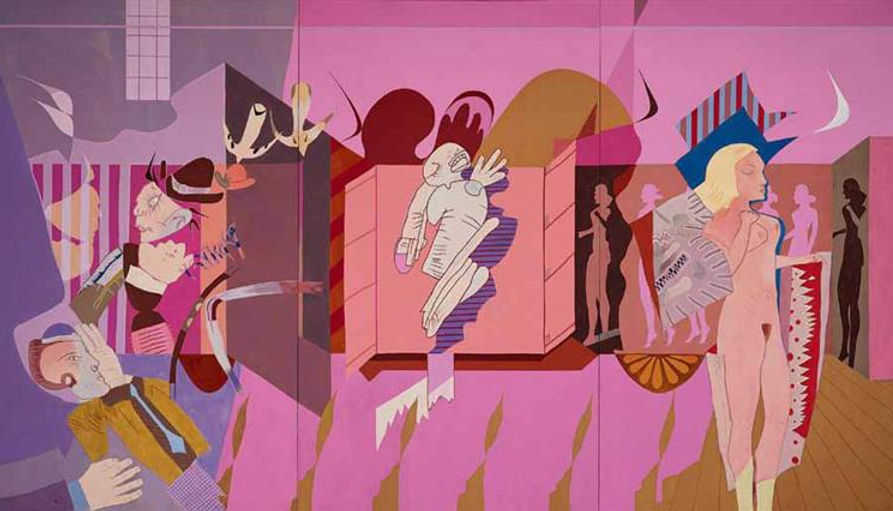
Chorus
Ivan Eyre
1969

Dragon Head
Ivan Eyre
1969

Black Ducks
Ivan Eyre
1970
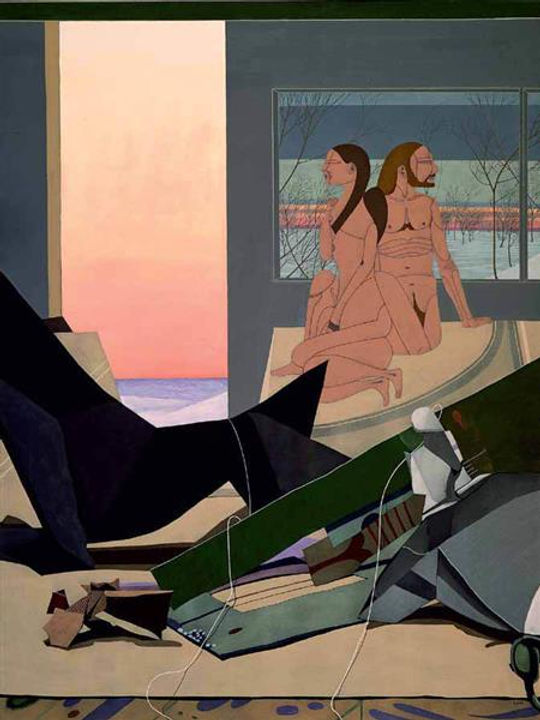
Roseate Plain
Ivan Eyre
1972

Long Grass
Ivan Eyre
1976

Morning Snow
Ivan Eyre
1976

Birdmen
Ivan Eyre
1981

Storm
Ivan Eyre

The Gold Box
Ivan Eyre

Outskirts
Ivan Eyre

City Box
Ivan Eyre

Summer Muse
Ivan Eyre

Ballerina
Ivan Eyre

Verandah
Ivan Eyre

Winter Window
Ivan Eyre
Wojciech Siudmak
b. 1942

Wojciech Siudmak
Wojciech Kazimierz "Wojtek" Siudmak (born 10 October 1942 in Wieluń) is a Polish painter, currently living in France. He was a student at Academy of Fine Arts in Warsaw. His works are often used as illustrations for science fiction and fantasy literature, including the Polish edition of Frank Herbert's Dune series. He is also known for his work on album covers, including the award-winning cover for Eloy's 1977 album Ocean. Siudmak painted in 1985 a picture Ethernal Love, he continues the subject e.g. in the form of monuments.[
Wojciech Siudmak was born in Wieluń, later destroyed by bombing, in which his elder brothers were wounded. Siudmak remembers the despair and ugliness of the destroyed town. He wants to memorize the tragedy of 1939.
Wojciech Siudmak

Wojciech Siudmak

Wojciech Siudmak

Wojciech Siudmak

Wojciech Siudmak

Wojciech Siudmak

Wojciech Siudmak

Wojciech Siudmak

Wojciech Siudmak

Wojciech Siudmak
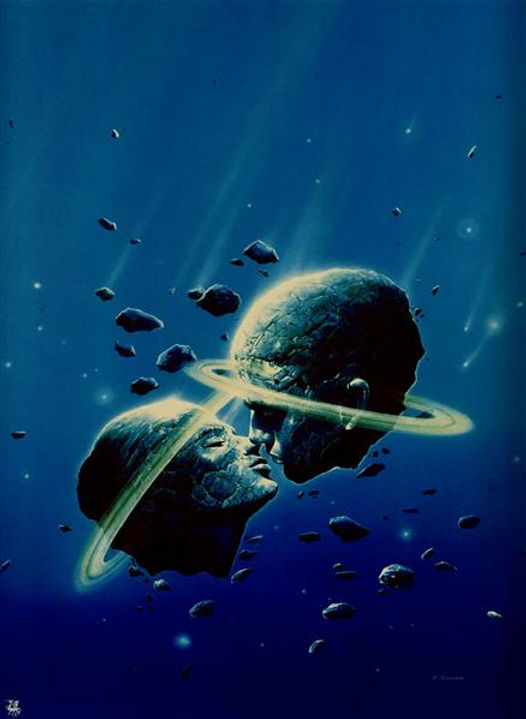
Wojciech Siudmak

Wojciech Siudmak

Wojciech Siudmak

Wojciech Siudmak

Wojciech Siudmak

Wojciech Siudmak

Wojciech Siudmak

Wojciech Siudmak

Wojciech Siudmak

Wojciech Siudmak

Wojciech Siudmak

Wojciech Siudmak
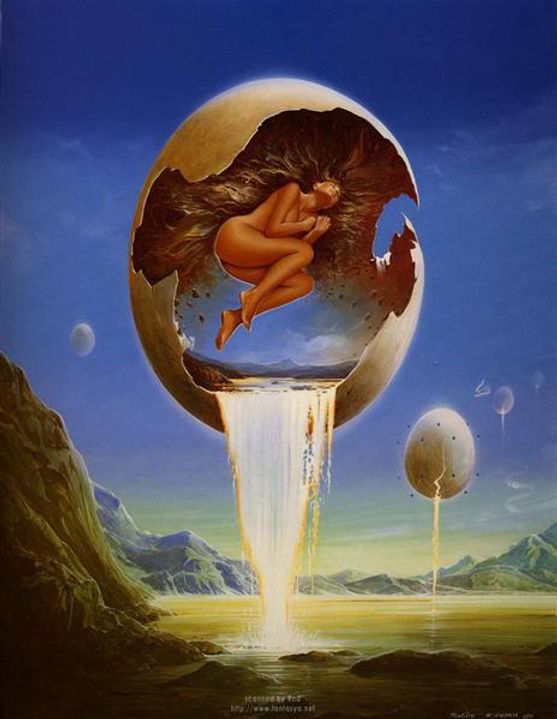
Wojciech Siudmak

Wojciech Siudmak

Wojciech Siudmak

Wojciech Siudmak

Wojciech Siudmak
Jean-Pierre Velly
1943 – 1990
Jean-Pierre Velly
(14 September 1943, Audierne, France – 26 May 1990) was a Breton etcher, draftsman and painter.
In 1965, after attending the Ecole des Beaux Arts de Toulon, he began study at the École Nationale Supérieure des Beaux-Arts in Paris. The following year he won the "Grand Prix de Rome" for etching. In 1967 he moved to Rome for three years to work under Balthus at Villa Medici, the French Academy. From 1970 he lived at Formello, a small village near Rome, where he worked for the next twenty years.
In 1971 he began exhibiting at Rome's Don Chisciotte Gallery, and started working in silverpoint, and painting in watercolor, particularly for the series Velly pour Corbière (1976–1978) from the poems of Tristan Corbiere, and Bestiaire Perdu (1978–1980). In the 1980s his subjects turned to landscapes, still life, life studies, trees and self portraits; using pencil, china ink, watercolor and oil.
In 1990, he was the victim of a boating accident and drowned in Lake Bracciano; his body was never recovered. Since then his work has been exhibited in Italy, France and Germany.
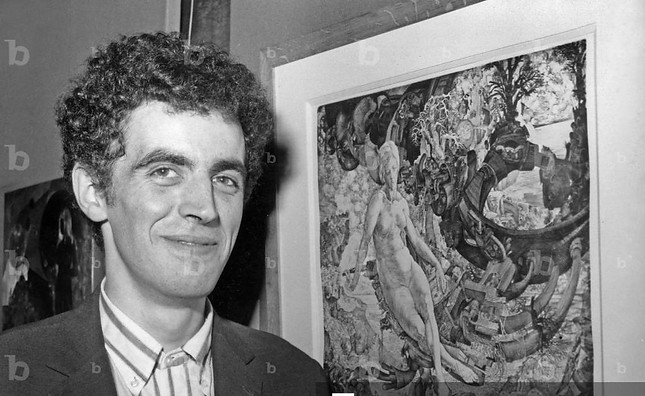
Jean-Pierre Velly

Jean-Pierre Velly

Jean-Pierre Velly

Jean-Pierre Velly

Jean-Pierre Velly (detail)
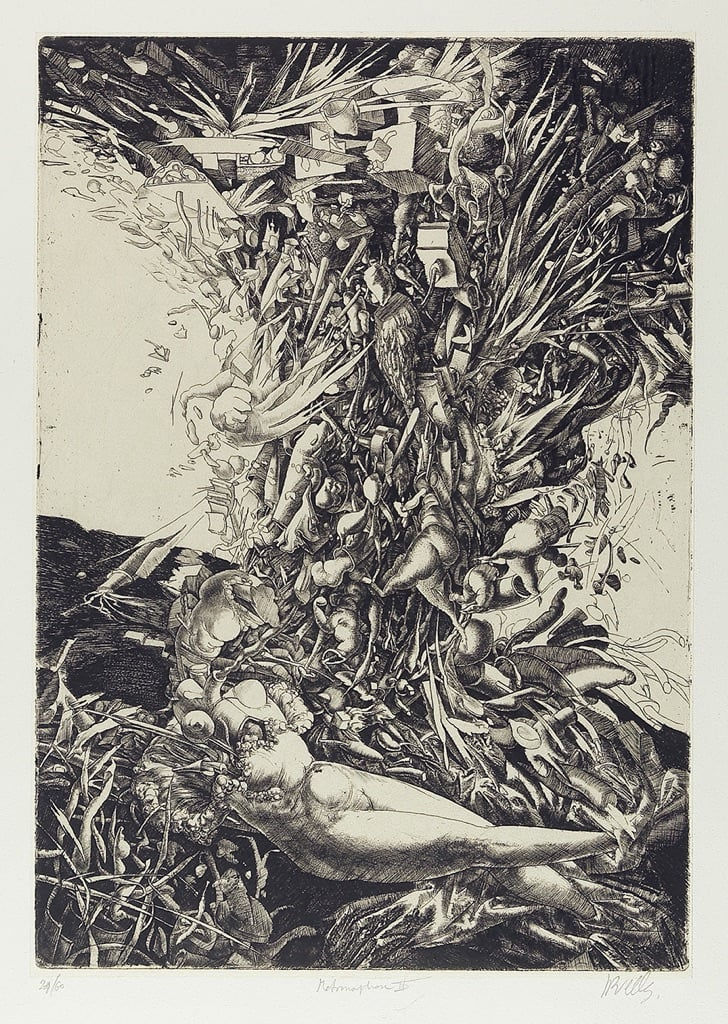
Jean-Pierre Velly

Jean-Pierre Velly


Jean-Pierre Velly

Jean-Pierre Velly (detail)

Jean-Pierre Velly

Jean-Pierre Velly

Jean-Pierre Velly

Jean-Pierre Velly (detail)

Jean-Pierre Velly

Jean-Pierre Velly

Jean-Pierre Velly

Jean-Pierre Velly

Jean-Pierre Velly
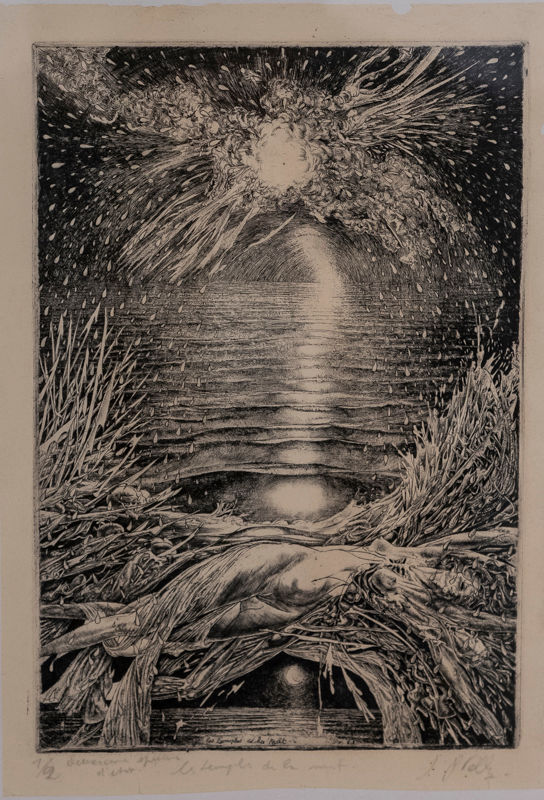
Jean-Pierre Velly

Jean-Pierre Velly

Jean-Pierre Velly

Jean-Pierre Velly

Jean-Pierre Velly

Jean-Pierre Velly

Jean-Pierre Velly
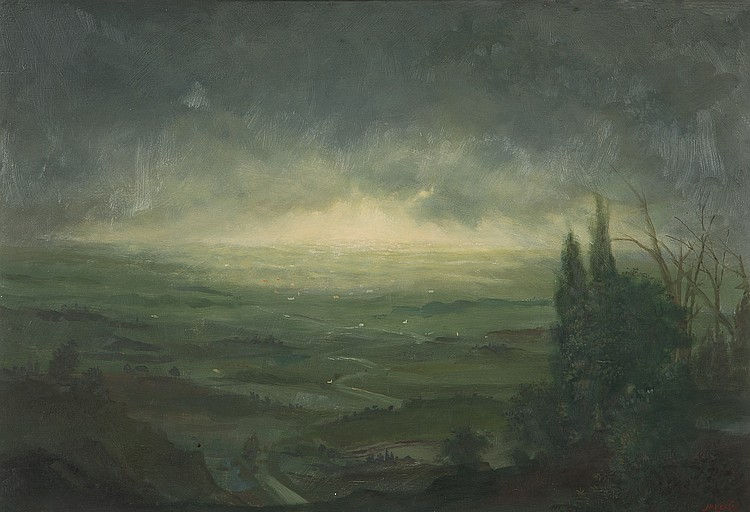
Jean-Pierre Velly

Jean-Pierre Velly
Rafał Olbinski
b. 1943

Rafał Olbinski
(born February 21, 1943) is a Polish illustrator, painter, and educator, living in the United States. He is considered one of the major representatives of the Polish School of Posters.
Olbinski was born in Kielce, Poland. He graduated from the architecture program of the Warsaw University of Technology in 1969.
Olbinski immigrated to the United States in 1981, where he soon established himself as a prominent painter, illustrator and designer. Olbinski's work is very similar to the work of the famous Belgian surrealist Rene Magritte; Olbinski describes his approach to painting and illustrating as "poetic surrealism". He has cited his influences as "everybody", specifically Saul Steinberg, Milton Glaser, Marshall Arisman and Brad Holland.
Rafal Olbinski's works are included in the collections of the Museum of Modern Art (Poster Collection), the Carnegie Foundation in New York, National Arts Club in New York, the Smithsonian Institution and the Library of Congress in Washington, Suntory Museum in Osaka, Japan, the Poster Museum in Warsaw, Poland, and others throughout Europe and the United States.
In 1992 Olbinski began a close collaboration with Sheri and Kenneth Nahan of Patinae, Inc. and Nahan Galleries. They continue to represent his works worldwide since that date.
In 1996 he was commissioned by the U.S. Information Agency to design a poster celebrating the 25th Earth Day Anniversary. From 2002 through 2010, a selection of Olbinski paintings was included in the Grand Space projection in Grand Central Terminal, as a highlight of the Earth Day Celebration in New York. The other artists featured in the show are Keith Haring, Roy Lichtenstein, Robert Rauschenberg, and Andy Warhol.
In 1999 Olbinski was commissioned to create a surreal image of San Francisco, by Gallery 444. The proceeds from the painting were given to The SF Chronicle Season of Sharing Fund, funding services for those in need. This was followed by a major exhibition of paintings by Olbinski held at Gallery 444.

Rafał Olbinski

Rafał Olbinski

Rafał Olbinski

Rafał Olbinski

Rafał Olbinski

Rafał Olbinski

Rafał Olbinski
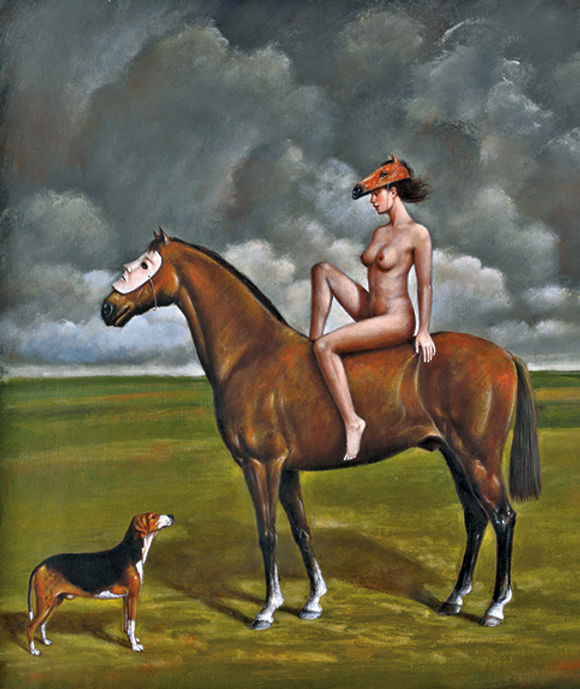
Rafał Olbinski

Rafał Olbinski

Rafał Olbinski
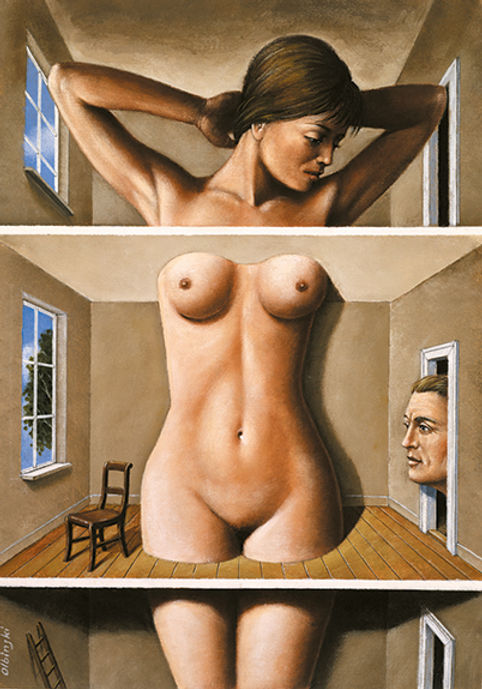
Rafał Olbinski

Rafał Olbinski

Rafał Olbinski

Rafał Olbinski
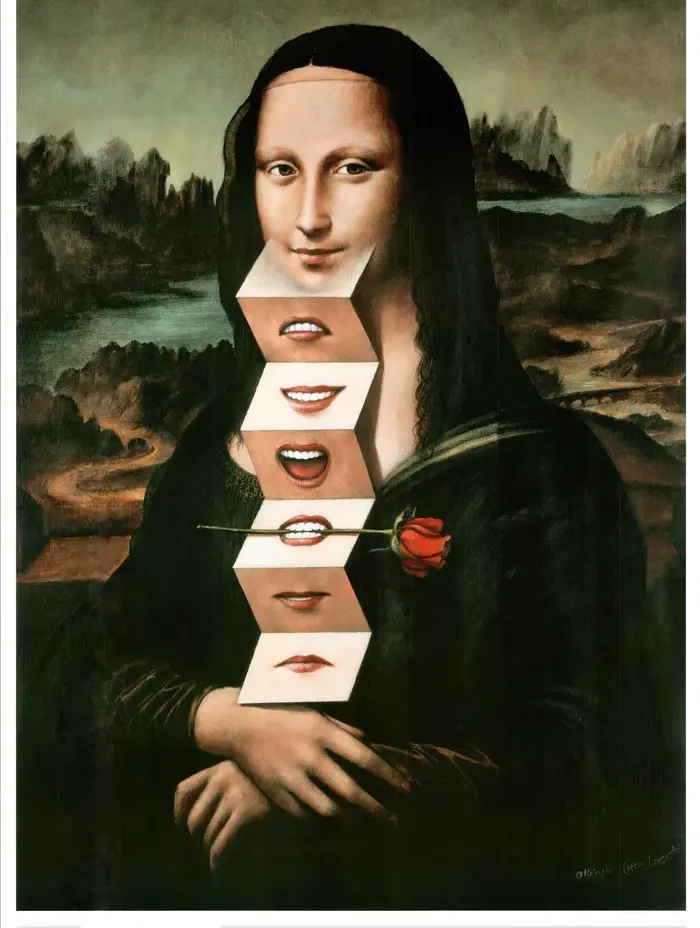
Rafał Olbinski
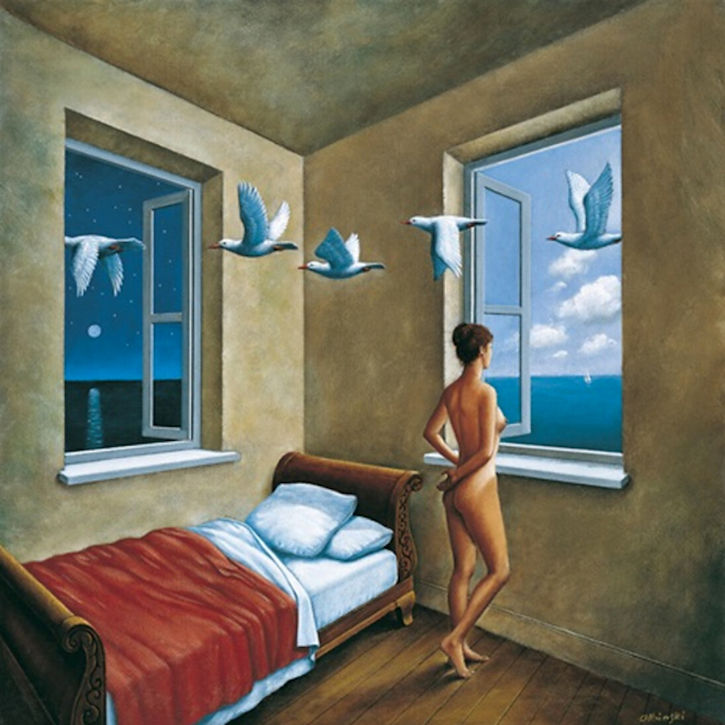
Rafał Olbinski

Rafał Olbinski

Rafał Olbinski

Rafał Olbinski

Rafał Olbinski

Rafał Olbinski

Rafał Olbinski

Rafał Olbinski

Rafał Olbinski

Rafał Olbinski

Rafał Olbinski

Rafał Olbinski

Rafał Olbinski
Lubo Kristek
b. 1943
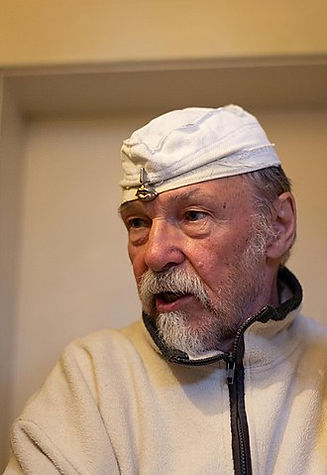
Lubo Kristek
(born 8 May 1943) is a sculptor, painter and performance artist of Czech origin, who lived in West Germany from 1968 until the 1990s. He specializes in critical assemblages and happenings, in which he incorporates multiple forms of media. He created sculptures for public space. He is the author of a three-state sculptural pilgrims' way. During his more than half-century long work in the field of performance art, he formulated his theory of "holographic perception".
In the 1960s, Kristek lived in a former soap factory, in Hustopeče, where he organised events incorporating music, visual art, poetry, theatre and improvisation. Testing of borders, experiments, and crossing the conventional frame is typical for his work. He follows the idea of a total work of art – Gesamtkunstwerk. At that time, he also experimented with using fire as a means of expression. He deliberately suppressed or sometimes annulled his artistic handwriting.
In 1968, Kristek emigrated to West Germany. He settled in Landsberg am Lech and lived there for almost three decades. That was also where he started the tradition of Kristek's Night Vernissages, from which his happenings evolved. From Landsberg, Kristek travelled to other places in Europe (Belgium, Luxembourg, Liechtenstein, the Netherlands, France, Italy, Spain, Republic of San Marino, Switzerland, Austria) to study and create.
Kristek was influenced by Arno Lehmann who lived in Salzburg, where Kristek used to go to meet him. In 1973, after Lehmann's death, Kristek created the sculpture Soul shaped by flame. A sphere dominates the top as a symbol of artistic heritage that Kristek adopted from Lehmann.
He was also influenced by the Austrian ethologist Eberhard Trumler (1923–1991), especially by the mechanisms of survival of the species. Kristek's existencial assemblage Expecting (1969) was created under this influence.
In 1977, Kristek travelled through the west coast of the United States and Canada with his exhibition tour American Cycle 77.
In 1989, after the Velvet Revolution, he returned to the Czech Republic.

The Heavenly Highway of Aunt Fränzi
Lubo Kristek
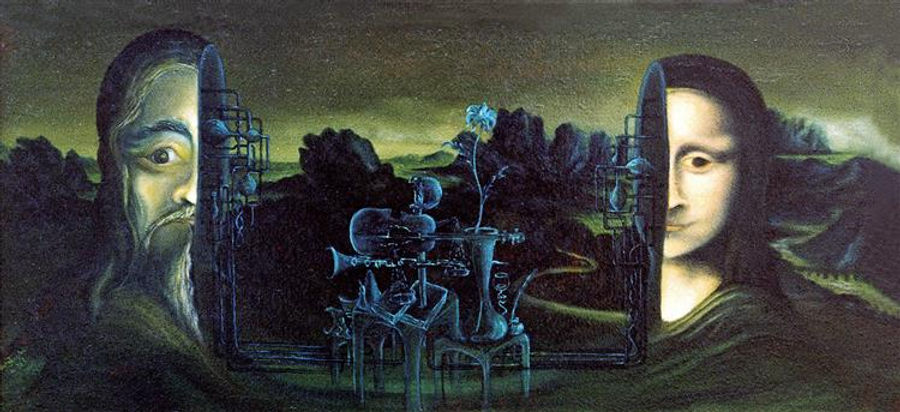
Absolute Glass Machine of Life
Lubo Kristek

Metastation of Abandoned Tones
Lubo Kristek

Bed
Lubo Kristek

Pasiphaë Through the Eyes of the Modern Era and Average Sodomising Moment
Lubo Kristek

First Phase of the Birth of Eroticism Coming from An Unknown Thorn
Lubo Kristek

In the Prematurely Cloned Age of One Planet
Lubo Kristek

Bird Mission
Lubo Kristek

The Consumption of the Priest
Lubo Kristek

Cosmo Lactic Connections Between the Extinct World of Atlantis, Rare Liquid from the Holy Scallop and My Fortune Teller – Viola Laluleilá
Lubo Kristek

Dancer’s Evening Toilet, Series World of a Big Circus
Lubo Kristek

Tree of the Wind Harp
Lubo Kristek
Iurie Matei
b. 1968

Iurie Matei
(Moldova, 1968) paints in oil paint in a style reminiscent of the surrealism of Salvador Dali. In his works he uses an existing universal iconography, but at the same time he developed a personal symbolism, such as the pierced with a nail gnawed apple or toy clowns, grinning at the viewer to constantly appear. His work is narrative in any case, but sometimes melancholy. He cited in his pictures the great masters of art history. In his paintings, dreams Iurie Matei and holds up a mirror to all mankind. His works are in galleries, museums and major art events in Moscow, Kiev, Venice, Odessa, Prague, The Hague, Amsterdam, Ankara, Paris, Madrid, Bucharest, Budapest, Rome and Milan issued.
Iurie Matei was born on 11 March 1968 in the vicinity of Chisinau, the capital Moldova has already started very young to paint. He finished his studies in 1995 at the National Art Academy Moldova, where he was the greatest talent and where his teachers said, just as it once was the case with Picasso, he could no more of them . Learn In eastern Europe, his talent and his style of the great surrealist Salvador Dali compared.
His body of work is already very extensive. He has his own television station in the Moldovan government and also a program in Romania Television. He is also a costume and set designer in many theatrical and film productions involved. Meanwhile he is also a lecturer at the National Art Academy Moldova active.
His style is reminiscent of the famous surrealists. He paints Portraits, nudes, landscapes and cityscapes. His paintings are above all by a mysterious marked "surreal" content. His technique is very refined, you could compare it with the painting of fine painters, the complex still life. Like them he is a master in the depiction of various materials and proportions and of light and shadow.
His complex paintings, in which figure as Harlequins or Don Juan type, on which they answer, and stimulate the imagination at. Matei cited in his paintings casually and almost effortlessly details of paintings by old masters such as Jeroen Bosch and Albrecht Dürer. At the same time he understands the need to let his own symbols come to light, so his impressive body of work have been a convincing unit added.

Iurie Matei

Iurie Matei

Iurie Matei

Iurie Matei

Iurie Matei

Iurie Matei

Iurie Matei

Iurie Matei

Iurie Matei

Iurie Matei

Iurie Matei

Iurie Matei

Iurie Matei

Iurie Matei

Iurie Matei

Iurie Matei

Iurie Matei
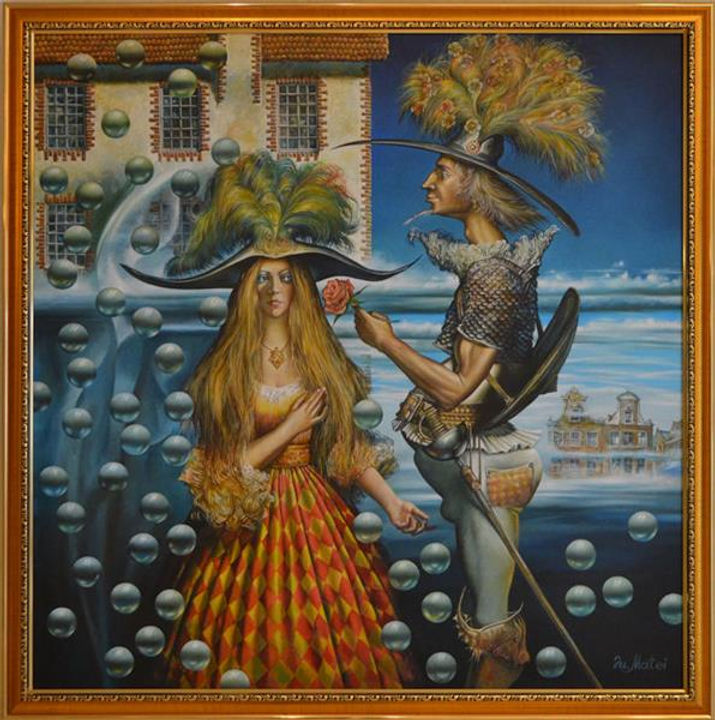
Iurie Matei

Iurie Matei

Iurie Matei

Iurie Matei

Iurie Matei

Iurie Matei

Iurie Matei

Iurie Matei